FREE distance learning for Kindergarten through Community College available online for Arizona students. FOR FURTHER INFORMATION, GO TO: http://www.sequoiachoice.org/
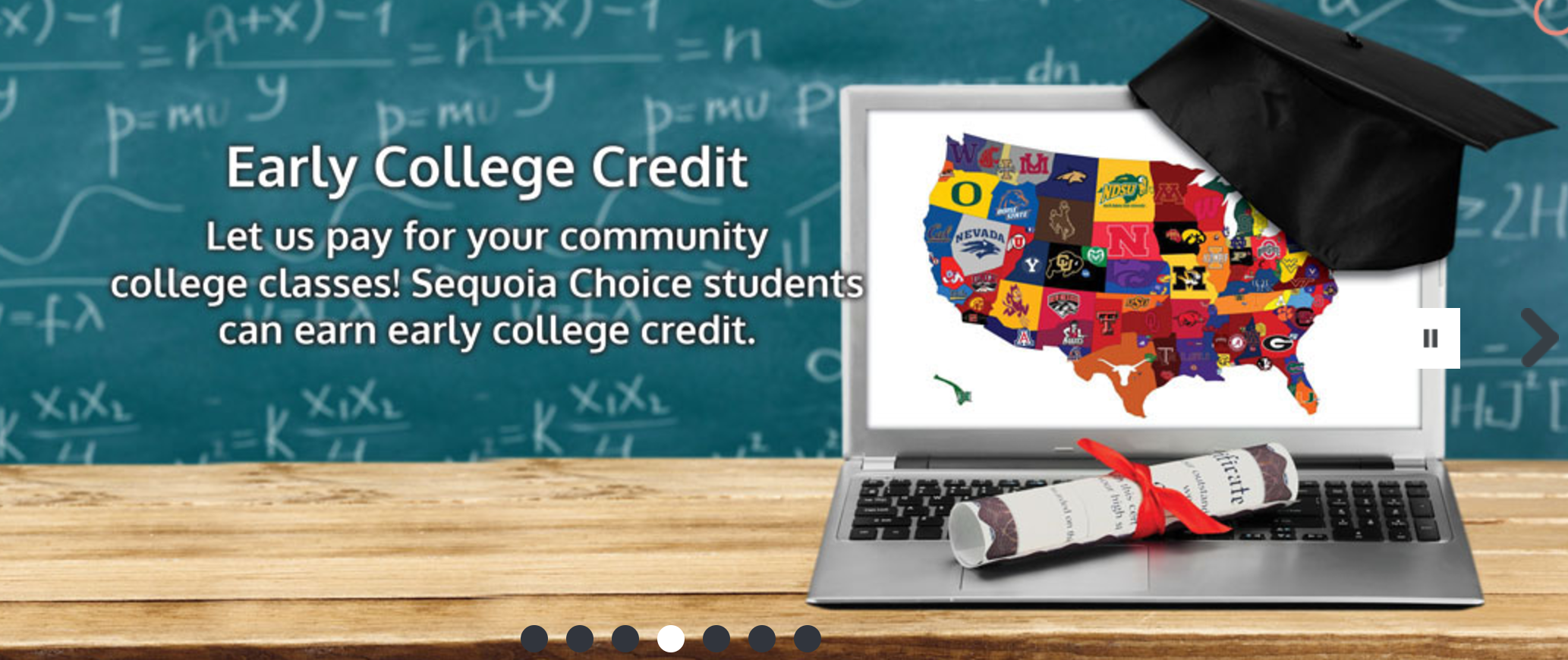


 FOR FURTHER INFORMATION, GO TO: http://www.sequoiachoice.org/
FOR FURTHER INFORMATION, GO TO: http://www.sequoiachoice.org/
Teaching is one of the most fun and noble careers one could have. They have the power to influence and touch students’ lives profoundly.
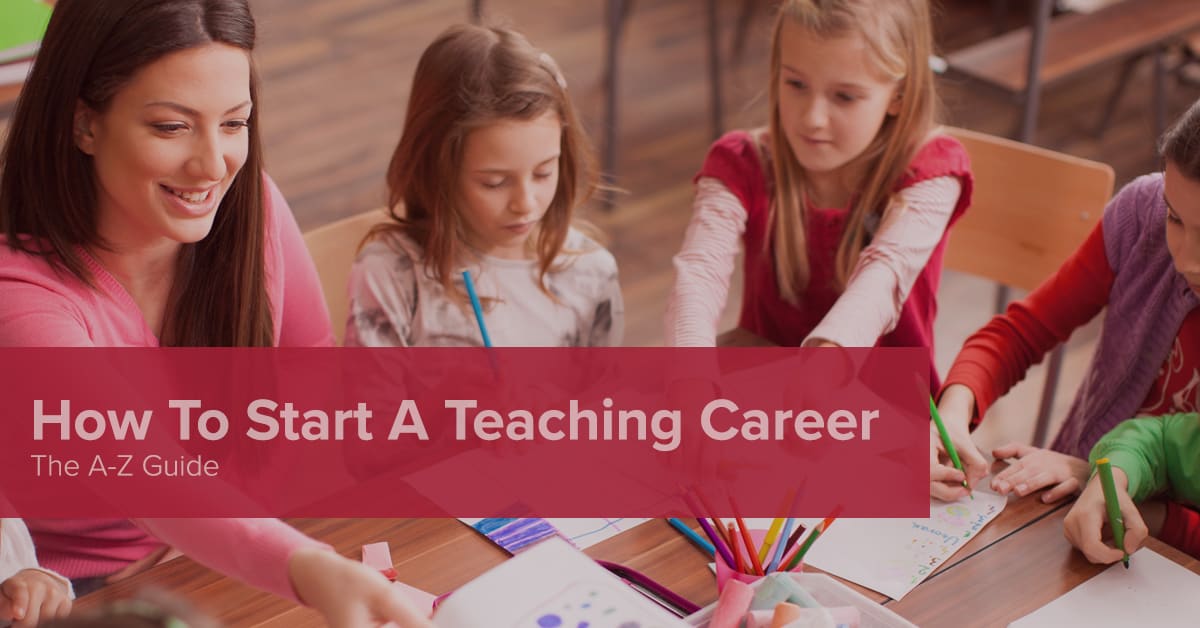
In this guide you’ll learn why teachers are more important than ever and how to start your teaching career.
In the United States, the demand for teachers is skyrocketing. For instance, in California alone, teacher vacancies currently clocks at over 14,000 positions. According to reports, the figures are set to grow in the forthcoming school years. Considering this, experts see a noticeable increase, with 19% in the post-secondary department and 17% for preschool.
With more job openings in specific subject areas, there is no question that the country needs better teachers. Teachers with specialization in particular subject areas such as ESL, STEM, and special education needs are in high demand. Wondering where to practice your teaching career? See teacher shortage statistics for top five states below.
Teaching delivers multiple virtuous benefits, but shortage remains an adamant issue in both public and private educational facilities. To date, statistics report critical levels of teacher shortage in the following states:
The US offers staggering number of job opportunities for teachers. As a matter of fact, multiple locations show immense attractiveness rating, a data that’s evaluated based on a number of key factors such as compensation, working conditions, qualifications, and turnover. According to the Learning Policy Institute, these are the top 5 states that offer the most advantages for potential educators.
5 = Highest, 1 = Least
Teacher shortage area or TSA is defined as an area of specific grade, subject matter or discipline classification, or a geographic area in which the Secretary determines that there is an inadequate supply of elementary or secondary school teachers.
The length of time to become a full-fledge educator varies depending on your preference and area of focus. However, there are common rules that apply to all, such as getting a Bachelor of Arts or a Bachelor of Science degree beforehand. Through the years, teacher education requirements have changed dramatically in each individual state. While no two states have equal requirements, these are common routes you can choose from when considering a career in teaching.
Earned through college or university, completion of this degree usually takes four years of regular schooling. School needs to be accredited by National Council for Accreditation of Teacher Education.
An increasing number of states approve Alternative Certification programs to certify new teacher candidates that already have a Bachelor’s Degree in a subject other than education. Alt-Cert education programs like Teachers of Tomorrow enable career changers to enter the teaching profession, providing quality preparation and support. This route is often the most streamlined affordable pathway to a career in education.
It is possible for an aspiring teacher to teach early childhood education after finishing a four-year course. However, it might be different for one looking to teach in high school. In addition to a bachelor degree, you will need to sign up for a teacher certification and teacher education program to get required on-the-job hours.
A majority of states allow you to teach students at high school or middle school once you obtain a four-year degree, a subject endorsement, hours, and teaching certificate of completion. However, this can vary depending on the rules per state. To get an endorsement, you may have to add another semester or a few more classes to your existing units. It will likely take you five years if you’re changing major subjects or getting your certification after finishing a bachelor’s degree.
If your state of practice requires teachers of high school and middle school to get a master’s degree, getting that certificate will take you one to two years more. Some degree holders earn this while student teaching. This route seems to take a lot of time; however, you might like to reconsider if you want to get more freedom on choosing subjects to teach, higher compensation, and better opportunities when landing a job.
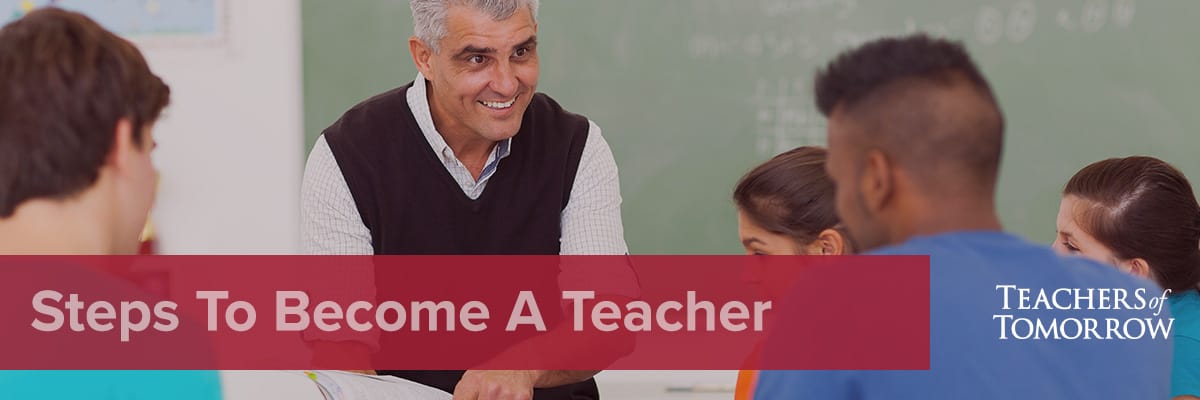
Considering a teaching career? Take note of these steps.
This typically involves completion of a major in the subject area you wish to focus on, along with a minor in education. An enrollment in a teacher education preparation program is also acceptable. Regardless of the choice, students generally complete mentorship or student-teaching subsequent to completion of bachelor’s degree.
Once you’re done with a four-year degree, the next thing to pay attention to are the requirements and exams that’s necessary to earn teaching credentials. These vary depending on location, but in general, students take a basic skills exam, along with an exam for the subject they wish to teach. The test scores, college or university transcripts, teaching program certificates, federal background checks, and complete application form should be submitted altogether to the State Board of Education.
are also great tools to gain additional teaching strategies and skills. Along with keeping up with the latest technology in education, you can use these sources to improve as a professional in the field.
According to the Bureau of Labor Statistics, earning additional credentials can help you get ahead when obtaining a teaching career. These certification programs, often offered by the National Board for Professional Teaching Standards, offer advanced teacher education credentials and certificates in various fields including mathematics, science, library media, health, physical education and others.
The next sections will introduce you to the top universities, subject areas, and certification requirements, along with compensation expectations for school teacher hopefuls.
Complete all required coursework and requirements for obtaining a four year Bachelor’s degree in Education, or you concentration of choice with a minor in Education, from any accredited college or university.
When choosing a teacher’s course, having a subject area in mind is crucial. At the moment, these are the most sought-after jobs you might consider venturing on.
Many non-English speaking students come to the US to learn English. School teachers are needed by these students so as to know how to speak and write the language fluently. Educators also help them adopt into a new campus and classroom. Aspiring teachers with college degree and multi-lingual abilities have higher chances of getting a career in education. Some of the common foreign language skills needed in US schools are Spanish, French, German, Latin, and the list goes on.
Involving prerequisite subjects such as information technology, statistics, physics, chemistry, biology, and geology, the need for teachers with concentration in these subject areas is exceedingly high. The reason is that, more and more teachers are choosing private sector schools, which allow them to earn twice the salary. Still, STEM teachers have plenty of career opportunities and are considered a valuable necessity in this field.
This refers to the special education needed by children with disabilities, including those with mild autism, dyslexia, ADD/ADHD, and sufferers of intellectual incapacity. By getting a course in this subject area, you should expect a lot of teaching openings because most positions go vacant every year. Not only physical schools, but also online academies launch dozens of opportunities each school year.
It’s very common for parents to change careers when their children become school-aged. There’s definitely a demand for early childhood education jobs ranging from preschool to early elementary school. This is where educators teach children to be lifelong learners.
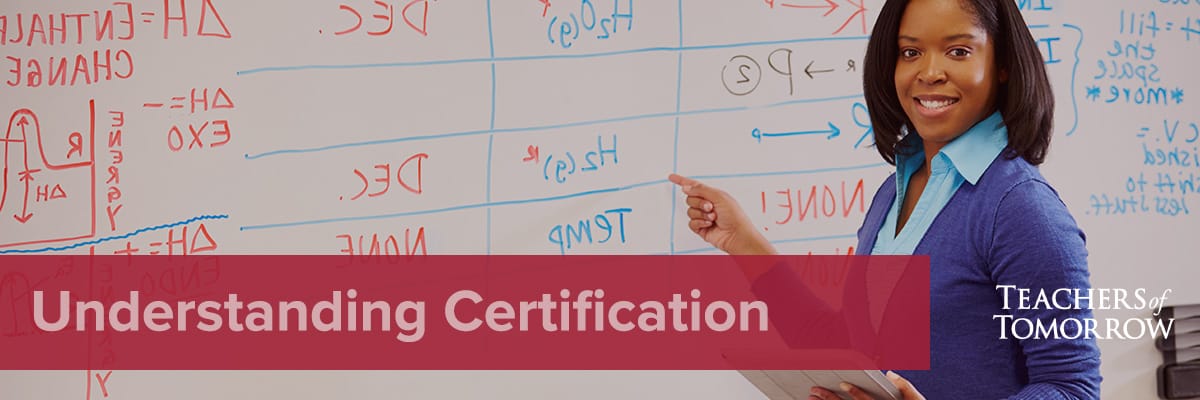
A teacher needs to meet certification and licensing requirements in order to jumpstart their teaching career. While requirements vary by state, these are the general teacher training prerequisites to date.
One of the basic requirements for state teacher is passing a standardized test. These exams, used by majority of US Public Schools, aim to measure a teacher’s knowledge and skills. Each individual state has their own standards, therefore, the requirements may vary per state. For instance, if you passed the New York State Teacher Certification Examinations in New York and you want to teach in California, you will also need to ace California Basic Education Skills Test.
These tests are extensively used for teacher certification.
The job market for teachers may be hard to crack, but nothing is impossible for someone with solid determination. To land on that first teaching gig, follow these steps.
The 3 Necessary Steps to Getting Your Teaching Degree by Matthew Lynch
The Ultimate Guide to Starting a Teaching Job Mid-Year by Jennifer Gonzalez
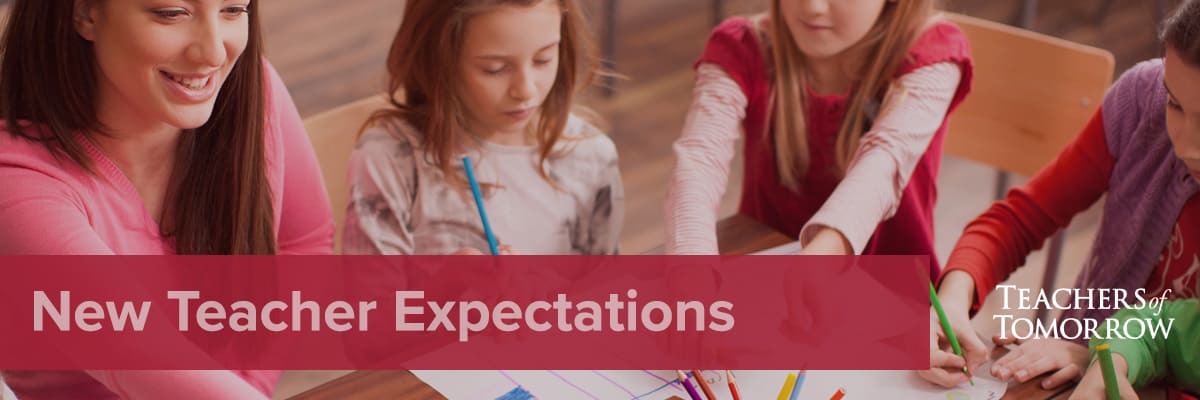
While teaching is not a “million-dollar” endeavor, it’s important to know how much money it can add to your wallet. Salary rates and schedules differ from one district to another, however, most states follow a general format.
According to Bureau of Labor Statistics, the average salary of teachers per year is $55,000 approximately. 10% of teachers in the US get $36,930 annually, while other 10% earn as much as $85,690 per year. Difference in salaries are affected by variety of factors, including location, years of experience, educational attainment, and type of school.
Highest paying US schools are located in these areas, sorted from highest to lowest.
Based on statistics in the past 10 years, there are the average pension that newly retired teachers receive per state.
> $20K
$20-$29K
$30-$39K
$40-$49K
$50K <
Source: Teacherpensions.org
Graph above shows average pension for newly retired teachers from 2006-2015. However, amounts presented here may not reflect the actual amount that retirees earn, which depends on years in service, qualifications, location, and contributions.
Important note: In order to qualify for a state pension, a teacher has to meet minimum service requirements, ranging from 5-10 years. The figures above aim to show the average pension new retirees get at retirement, including only the teachers that qualify for pension.
10 Things a Retired Teacher Wants You to Know by Jessica McFadden
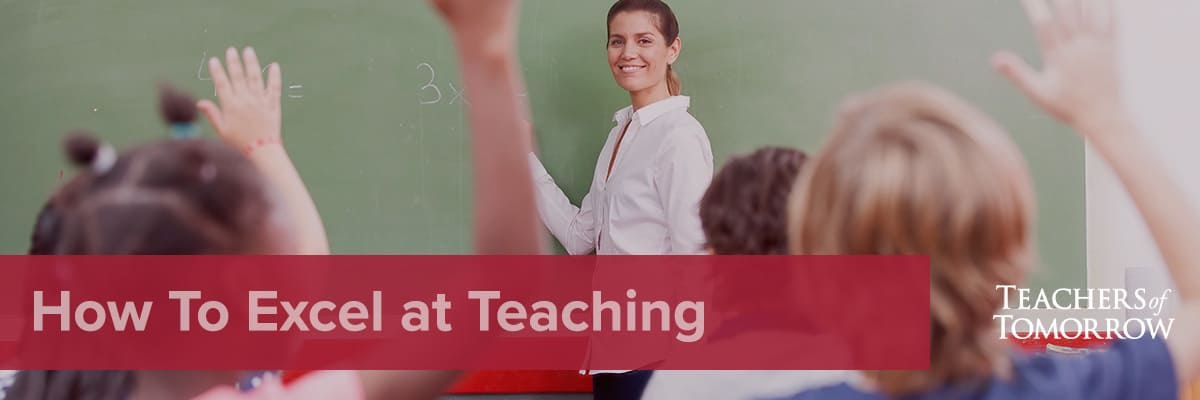
Teaching and making a difference in students’ lives is rewarding on its own. But, it is more rewarding if you’re able to improve professionally and conceptualize teaching strategies for more effective teaching. So how exactly do you upgrade yourself as a teacher? Read on.
A teaching philosophy defines what you want to become in terms of learning and teaching. This written statement should discuss your how you intend to apply your beliefs by stating concrete examples of what you’re doing or planning to do inside the classroom. Why is this necessary? To achieve personal and professional growth.
When writing your very own teaching philosophy statement, take into account the following guidelines.
New teachers can make use of certain strategies to make teaching more valuable. Five of these strategies are:
Practicing clarity.
When teaching new lessons, a good teacher begins by explaining the purpose and goals of learning it. They should demonstrate examples or models so students can figure out how the outcome really looks like.
Inducing class discussion.
An efficient teacher often steps up and mitigates classroom discussion. This way, students can interact and learn from one another. It’s also an ideal way to assess how well students are grasping new ideas and knowledge.
Providing student/teacher feedback.
Giving individual or group feedback is an excellent method to know how students are coping up with new educational concepts. Written or verbal, it pays to provide comments and keep them altogether in writing to monitor student’s growth. Teachers must also allow students to do the same.
Doing systematic student assessments.
In order to come up with accurate student feedback, teachers need to spend sizable amount of time creating systematic assessments. Evaluations should be done in a routine or regular basis.
Doing/teaching metacognition.
During this process, students have the liberty to conceptualize, organize, ease their way to learning, and evaluate their own work down the road. By letting students take responsibility of their thoughts and learning, student ownership heightens. The good news is, metacognition can be taught to students of all levels.
Having in-depth knowledge of subject area.
Creating excellent curricula starts with a teacher whose specialization is correct for the field in question. By having complete knowledge of your area of focus, you’ll easily answer student questions and craft an effective lesson plan for them.
Using strong verbal and written communication skills.
Whether creating lesson plans, drafting exams, doing classroom discussion, or speaking to parents or colleagues, adept communication skills is key. When in doubt, pay close attention to this aspect and work on improvement. Surely, you’d be a great and effective teacher once successful.
There’s nothing more fulfilling than having awesome classroom fun. Here’s how to do it:
Explore new things with students.
Learning is much more fun when both teacher and students learn mutually. So drop down your authoritative side when appropriate, and join in the learning journey with them.
Add a hint of mystery.
Children love surprises, and this also applies inside the classroom. To make discussions more exciting, do not spill the information right away. Swathe it in mystery instead. Start with an intriguing detail and then ask questions. Your students will surely love it.
Show care and goofiness.
Sometimes, it’s okay to sacrifice authority if it means making your students happy and more enthusiastic. Bundled with authentic care from you, children will feel better knowing that their teacher is someone they can rely on and be funny with.
Take part in projects.
Think of this as a workshop where the leader plays a role with the team. Step down from your level, be part of the activity, and you’ll discover how your students get more focused and engaged with the task at hand.
Stop being monotonous.
Doing the same thing every single day is dull and boring – your students feel this. Break the monotony by exerting extra efforts, taking risks, trying new things, make mistakes and learn from them, and live each teaching day with positivity.
Review past class materials.
Integrating old materials with new ones is another great way to alleviate boredom. Go deeper into past lessons to see if any information is missed. Spend about a couple of hours for this to enhance students’ memory and learning.
Talk about your passion.
Sometimes, passion can be really contagious. Spend some time sharing passion with your students. Tell them a scenario where you had great fun doing something you’re passionate about. For sure, your students will inherit the same passion as you.
Have a good laugh with jokes in class.
Being a teacher doesn’t mean only you have the right to share your sense of humor, your students can, too! Let them share funny stories and have a good laugh about it. This way, you’ll enjoy one another.
Forget lectures. Say hello to conversations.
Teaching doesn’t have to be passive at all times. Most students find lectures repetitive and boring, that’s why you have to channel boredom into something more exciting. Speak to your students like you would with a good friend. Exchange thoughts and ask questions in such a way that you’re not the only one that does the responding.
Know your body language.
As the cliché goes, actions speak louder than words. This also applies when in a classroom discussion. According to experts, there is an ideal pace to move around the room, head position to let them the students know they got your attention, and manner to speak to students. Simply put, think of teaching as a performance where you have to be aware of yourself.
Be confident.
People who have high confidence and positive energy tend to attract more attention and respect. The same can be said to teachers. Express your passion in teaching by showing that you’re enjoying what you do. Nurture your inner self while nurturing your relationship with your students – they sure will have a great time as much as you do.
Picture yourself as a student again.
Your students will take it as a challenge if you sit as a student for a day and you let one or two of them to discuss in place of you.
Don’t take teaching conflicts too seriously.
Teaching and learning can be stressful to both teachers and students. Some students may take more than one courses, and may need to balance work with studies. Teachers, on the other hands, have various responsibilities that do not stop with teaching or making lesson plans. This is the reason why you shouldn’t be too hard on yourself when things are not working like you expected. Things happen, but they pass so understand, empathize, and carry on.
Different teaching styles the affect students’ learning by Susan Day
10 Teaching Essentials by Tom Sherrington
Teaching Strategies for Dyslexic Kindergartners by Judy Hanning
Four Ways to Not Quit Teaching by Dan Meyer
40+ Brilliant Teaching Hacks by Vanessa Levin
The American Society of Civil Engineers (ASCE) Fresno Branch and Younger Member Forum would like to invite faculty, students, and parents to the ASCE Dream Big screening. Our previous movie screening date has SOLD OUT, BUT we have opened a SECOND SCREENING DATE. The second screening will be held on Saturday, February 25th located at Campus Pointe’s Maya Theater across from Fresno State. The screening is 100% free, but tickets are limited, so reserve them now!Attached is a flyer with all the information. ASCE professionals will be eager to meet our future leaders and answer any questions they may have. Hope to see you and your students there!
Please use this link to obtain tickets for the Saturday showing. Please bring a printed copy of your ticket(s) to the movie showing:
www.ascedreambigsaturday.eventbrite.com
Please Note – If you have advanced tickets for the Wednesday showing (February 22nd) there is no need to register for the Saturday showing. Please bring a printed copy of your ticket(s) to the movie showing. Flyers for this event do not count as tickets.
If you have any questions or concerns please feel free to contact our K-12 Outreach coordinators Analisa Gonzales (agonzales@bcf-engr.com) and James Loy (jloy@markthomas.com).
All around the world, engineers are pushing the limits of ingenuity and innovation in unexpected, imaginative, and amazing ways. Dream Big: Engineering Our World, a giant-screen film about engineering, will take viewers on a journey of discovery from the world’s tallest building to a bridge higher than the clouds. Along the way, the audience will witness how today’s engineers are shaping the world of tomorrow.
http://www.asce.org/dream-big/
James Loy, PE
Senior Design Engineer
(559) 447-1938 x3114 | (559) 374-3114 direct
Mark Thomas & Company
Providing Engineering, Surveying and Planning Services
www.markthomas.com
We had 15 teams for MathCounts this year! This was the largest group ever and the most teams ever! It was a great day. It went longer than usual (due to so many teams), and everyone enjoyed it! I’ve attached pictures of the first place team and top 5 individuals. El Portal Elementary from the Mariposa area came for the first time and moved quickly to 3rd place (quite the upset!)
The top 6 teams were:
1st—Granite Ridge
2nd__ Clark Intermediate
3rd—El Portal Elementary
4th—Edison Computech
The top 10 individuals were:
1st—Jai Mehrotra-Varma(Granite Ridge)
2nd—Tyler Ho (Clark)
3rd—Luke Chao (Granite Ridge)
4th—Andrew Lu (Alta Sierra)
5th—Weehan Choi (Granite Ridge)
6th—Deepro Pasha (Granite Ridge)
7th—Iris Wang (Granite Ridge)
8th—Nipun Amarasingh (Alta Sierra)
9th—Lilian Chen (Granite Ridge)
10th—Pratham Hombal (Alta Sierra)
The top 2 teams qualify to go to the state competition so congratulations to Granite Ridge and Clark Intermediate!
The top 3 individuals not on a winning team also qualify to go to state so congratulations to Andrew Lu, Nipun Amarasingh, and Pratham Hombal all from Alta Sierra!
Thanks for Jon Dueck and Fresno County Office of Education for taking time to prepare this math competition for students!
Once your student understands counting with manipulatives and identifies where whole numbers fall on a number line, you can add using both of this visuals. Start with adding 1+1, put out two beans and push the one and one together. The student should come up with 2. Have the child count the one and one and then count it again as 2. Show the numbers with dots on a paper. One dot plus one dot equals two dots. Now add 2+1 and move through the same process.
1+1, 2+1. 3+1, 4+1, 5+1, 6+1…
Then add 1+2 and look at 2+1 again to show student that 1+2 and 2+1 gives you the same number of beans or dots. This is COMMUTATIVE PROPERTY. Shows that you can add in either direction and get the same thing.
Move to the number line now. Put your finger or a pencil on the number 1. Adding one means moving right by one number. This will also show that 1+1=2. Show it with beans, dots and number line for several examples.
Go back and ask if 4+5 = 5+4 to revisit commutative property.
Continue to practice single digit addition until student feels confident.


WASHINGTON — The professions expected to show one of the biggest job growth rates in 2017 and the largest growth in sheer number of jobs will be trade skills, according to a year-end report from CareerBuilder and labor market data provider Emsi.
The U.S. economy is expected to add just over 1 million new jobs in fields such as electrician, plumber and HVAC technician in 2017. That’s a job growth rate of 8 percent. The average hourly earnings for professionals in those fields will be $21.38, or about $45,000 a year in 2017, the report says.
While skills trades generally don’t require a college degree, they do require significant training, through apprenticeship programs and both in-class and on-the-job experience.
The professional category that will show the largest job growth rate in 2017 will be information technology. CareerBuilder says that field will add 472,000 jobs next year, for a growth rate of 12 percent. In demand jobs in that field will include data scientists, user interface developers and mobile software engineers.
Business and financial operations, health care and sales also make CareerBuilder’s list of the five top professions for job growth and opportunities in 2017.
“Our research shows that employers are very invested in expanding head count in areas such as analytics and data science, product development and sales as they strive to stay competitive in B2B and B2C markets,” said CareerBuilder CEO Matt Ferguson.
“Skilled laborers will also see high employment demand in the year ahead as will workers in clinical roles,” he said.
CareerBuilder and Emsi used a variety of national and state employment resources as well as online job postings to come up with their list of 2017’s best jobs. The full list is below:
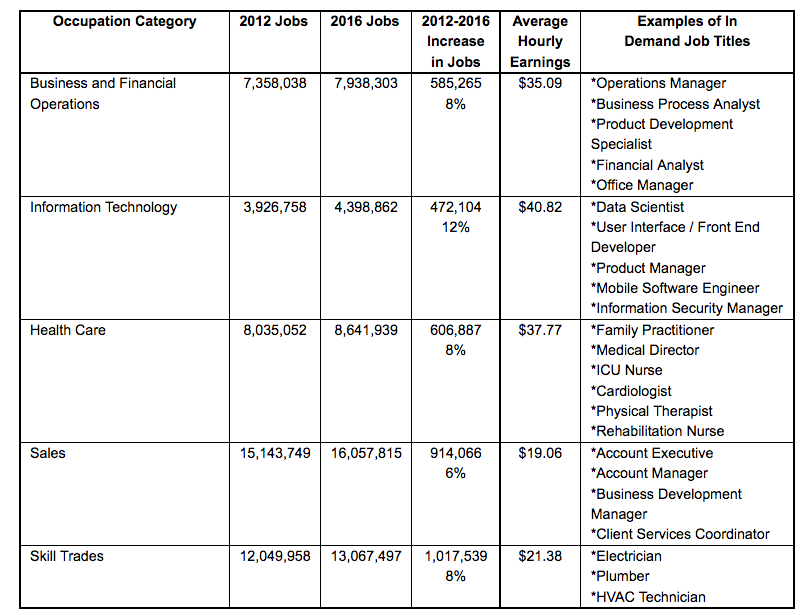
 25 Activities to Keep Kids’ Brains Active in Summer
25 Activities to Keep Kids’ Brains Active in SummerAs students set out on summer adventures, send their parents a much-needed “life preserver” — a list of 25 activities to share and enjoy with their children. These fun activities cover all subjects and grades; there truly is something for everyone. And, if you have your own summer adventurers at home, this list can rescue your kids from the boredom and blahs of rainy summer days. This year, do more than amuse and entertain your kids and hope for the best for your students, keep their minds working all summer long! Included: Twenty-five activities to fight summer boredom and build thinking skills.
It’s summer — that time of year when teachers bid farewell to students, hoping their gleefully escaping charges don’t forget everything they’ve learned during the school year. It’s also the time of year when nervous parents take on the challenge of keeping their children physically busy and mentally active during long summer days. To help those efforts, Education World offers 25 ideas that not only reinforce skills taught during the year, but also to entertain students through the summer months. Share these resources with parents to help them and their children make the most of the lazy, hazy days to come!
Many of these activities link to online resources. In most cases, however, the activities can be completed even by those without Internet access. The activities that do require Internet access can be printed and distributed to students before school ends or accessed and printed by parents at most public libraries.
| Round | Kind of Game | Level of Difficulty | Score |
| 1 | |||
| 2 | |||
| 3 | |||
| 4 | |||
| 5 |
Article by Cara Bafile
Education World®
Copyright © 2009 Education World
– See more at: http://www.educationworld.com/a_curr/profdev073.shtml#sthash.WxC0j1nK.dpuf
Most students experience some level of anxiety during an exam
However, when anxiety affects exam performance it has become a problem.
General preparation/building confidence:
Review your personal situation and skills
Academic counselors can help you in these areas, or refer to our Guides on the topic:
Test preparation to reduce anxiety:
During the test:
Use relaxation techniques
If you find yourself tensing and getting anxious during the test:
Relax; you are in control.
Take slow, deep breaths
Don’t think about the fear
Pause: think about the next step and keep on task, step by step
Use positive reinforcement for yourself:
Acknowledge that you have done, and are doing, your best
Expect some anxiety
It’s a reminder that you want to do your best and can provide energy
Just keep it manageable
Realize that anxiety can be a “habit”
and that it takes practice to use it as a tool to succeed
After the test, review how you did
Check out local centers and resources in your school for assistance!
If you are aware that you have a problem with test anxiety,
be sure your teacher or instructor knows before any testing begins
(and not the hour before!).
There may be other options to evaluate your knowledge or performance within the subject matter.
http://www.studygs.net/tstprp8.htm
I have often been asked what order I was in amongst the children in our family. I get strange responses when I say a middle child. Why? Because I don’t fit the profile. So, today I decided to research more about Birth Order to understand what those knowledgeable on the subject were referring to.
After reading many article, I felt that this chart covered most of the inherent qualities.
How does this chart explain your birth order?
I learned there are many variables that affect birth order. According to Parent Magazine and the subject of birth order, blended families, twins, large gaps between children and adopted children will not fall into these natural tendencies.
What other things influence personalities? Many I presume. Nature and Nurture interacting is a constant topic in our household. Is it in our child’s DNA or influenced by his life experiences and his environment?
What about peers vs. sibblings vs. parents? Some studies show that sibblings play the biggest role. Other experts will say that peers have the most influence, which is the case of an only child. Most all agree that parents play a large role in the child’s personality. The primary caregiver in the first years will be the parent the child is most attached to according to other research.
What about the zodiac signs, how the stars aligned at birth and other variables? All this may play a part in whom a person becomes but I found the birth order and interesting subject to pursue.
The Classroom of the Future
The Physical Space
The days of classrooms where a teacher desk sits at the front of the classroom and students’ desks are neatly aligned in rows are over. Learning technologies, and changing pedagogical methods, are not only changing the way we teach but also the physical environments we teach in. The role physical environments play in our learning is just beginning to be studied and understood. Akinsanmi (2011) asserts that “there is little research on the role the physical environment plays in the learning process” but more and more educations theorist and psychologists are beginning to offer perspectives “from which designers can conceptualize the creation of an optimal learning environment” (The Optimal Learning). One thing that is clear from the research of the physical spaces which make up learning environments is that current classrooms seldom facilitate 21st century learning.
Image taken from: http://rliberni.wordpress.com/2010/05/26/ideal-classroom-design-for-21st-century-learning

A study done by the Herman Miller Company (2011) on adaptable spaces and their impact on learning identified four key constructs that affect student learning; Basic Human Need, Teaching, Learning, and Engagement. Herman Miller assert that there is a “pedagogical value of a comfortable chair” and that by “recognizing the impact that physical comfort has is support of pedagogy, and designing flexible, comfortable learning spaces enhances the experience of both faculty and students.” When classroom furniture is easily moved to allow for comfort and practicality students’ learning experience was heightened with increased seating comfort (32%), being able to clearly understand the professor (14%), and view materials (17%). Besides students being better serviced by redesigned and malleable classrooms educators also reported the benefits of increased lighting, better access to internet connections, improved ability to hear students and having more whiteboard space (p. 3,5).
The research summary also highlighted the fact that with regard to teaching “emerging discoveries about how people learn, rapid advancements in technology, and heightened awareness of student expectations” were what caused the most pedagogical changes and in order for teachers to take advantage of these changes teaching spaces must be able to utilize new technologies and have classroom “flexible enough to accommodate different teaching styles”. Adaptable learning spaces also better facilitate learning especially since the “meaning of knowing has shifted from being able to remember and repeat information to being able to find it use it and contextualize it.” Marc Presnsky describes how students no longer prefer large lecture halls and instead desire learning spaces that “allow them to get to know one another, engage in dialogue, work independently or in groups on projects…get or provide private feedback [and] seek a collaborative environment that fosters understanding and learning” (Herman Miller Company, 2011, p. 5-6). Prensky’s quote perfectly illustrates why classroom spaces should no longer be static but should be easily adaptable to fit whatever activity or pedagogical method the teacher chooses to deliver that day’s lesson in.
Lastly adaptable learning spaces make it easier to engage students by allowing for the quick and easy configuration of classrooms to facilitate different kinds of activities. Students who participated in classes held in classrooms designed around adoptable spaces ideas reported being 24% more engaged in class and 23% more likely to feel that communication was better facilitated while teachers describded how it was easier to integrate teaching methods (22%), easier to use technology while instructing.The figures below are also taken from the study and show just how effective adaptable spaces are.
“Additional insights came from evaluating faculty and student perceptions about
collaboration and fostering a sense of community or belonging within the Learning
Studio. Students reported they are:
• 16% more likely to feel comfortable asking questions
• 28% more likely to be able to conduct group work
• 20% more likely to feel the classroom presents the appropriate image for the college
• 22% more likely to feel valued
The results from faculty were even more supportive. Faculty members are:
• 32% more likely to agree that collaboration between students is better
• 24% more likely to agree that collaboration between faculty and student is better
• 44% more likely to believe the Learning Studio conveys the appropriate image
• 47% more likely to feel valued (Herman Miller, 2011, p.8-9)”
Classrooms designed using adaptable learning spaces adhere exactly to what Askinsanmi described as removing “the focus from the teaching wall and creating the ambiance of a favorite grandma’s living room, thereby providing an emotionally safe, comfortable and visually stimulating environment” (p. 6). When students are comfortable, sitting in a room that they feel caters to their needs they are more willing and able to learn. Hopefully as our ideas about how to instruct students continue to change and evolve so will the way we setup and decorate our classrooms.
Below is a diagram taken from Herman Miller Company Research Summitry which illustrates student and facility experience in physical learning spaces.
Below are two pictures showing some of the learning spaces described by Herman Miller.
Both images taken from: http://www.hermanmiller.com/discover/tag/cetld/
The Pedagogical Place
Besides the physical layout of the classroom changing so will the tools we use to instruct students. As Heather Edick asserts “there is increasingly sophisticated technology to come” which will benefit teachers “in terms of resource management and the opportunity to tap sources of knowledge that would not have been available because of geographical barriers” (Edick, Visions of the). Besides technology’s increased use in the classroom of the future another major change “is an emphasis placed on learning models that support the active construction of knowledge and skills.” Instead of educational environments and instruction being passive “there has been a shift…to environments in which the learner actively explores the world and constructs their own internal models of understanding (Classroom of the, 2006).” Classrooms of the future will no longer be little factories where we “can find teachers encouraged (and often compelled) to mass produce learning and marginalize the differences in aptitudes, interests, and abilities” which no longer “prepare students for the fast changing global society they will inherit” (Fielding, Lackney, Nair, 2011).
The Human Computer Interaction Lab (2006) completed a study which anticipated the development of “new embedded technologies that can be a seamless part of any physical object in schools” which can then be used to support learning” (Classroom of the). One example of technology being used to facilitate learning when it is viewed as a “constructive and social activity” is the internet. As the internet “increasingly gained in popularity as a communication channel” and Web 2.0 applications become more common “attention switched to social interaction and its relevance for learning” (Mäkitalo-Siegl, 2010, p. 3). An example of this might be students using a curation tool such as Paper.li to sort and evaluate information before sharing it with others or collaborating on a Wikispace page with another student, both of which focus instructions on the active construction of knowledge and building communities and social interaction. In the classroom of the future technology will no longer limit collaboration and community thinking solely to the inside of the classroom but will allow for these activities to occur outside the classroom in the real world. Students could learn Chinese “using a large HDMI monitor and High Definition sound system, along with a web connection…[and instructors] could take them on virtual field trips once a month, wearing a wen camera that shows students sites, such as the Wall of China” while also allowing them to practice their Chinese with native speakers (Edick, Visions of the).
In addition the classroom of the future will facilitate learning by using technology-enhanced objects while also “building communities in virtual and physical learning spaces.” By embedding technology into “familiar every-day devices” it makes the technologies easy to use while also turning them “into tools for effective and motivating learning.” An example of this might be having students complete concept maps on a whiteboard or laptop or by having students use StoryTable to collaborate while making a story. An example of a “knowledge-building community” existing both inside and outside of the classroom is a project called CIPHER (Communities of Interest to Promote the Heritage of European Regions) which “constitutes a multidisciplinary community in the field of digital cultural heritage.” The project uses “advanced technology and the digital tools applied in the creation, recording, and preservation of cultural heritage…[with] collaboration taking place between different groups and communities, such as universities, local schools, and museums” to produce the artifacts used in the project (Mäkitalo-Siegl, 2011, p. 5-7). A classroom designed to allow this kind of learning would need space for collaboration to occur, access to the technologies that allow for the creation of artifacts and would look remarkably different from the look of most classrooms today.
The classroom of the future might also be paper free as laptops and other educational technology allow for the elimination of paper. As laptop and tablet computers become cheaper in the near future instead of teachers copying handouts and exams to give to students they will be ‘pushed’ online to students. All students will carry laptop computers which will include textbooks, eliminating textbooks, heavy backpacks and lockers, while also making for a cleaner classroom environment. The use of laptops and tablets could also allow for students to keep electronic portfolios enabling them to “add comments and reflections based on an artifact at any time.” The portfolios could also be used during parent teacher conferences by allowing the teacher to share students portfolios “via SMART board or a tablet and explain the student’s progress to the parents using the portfolio” (Edick, Visions of the).
The classroom of the future is a space, both physically and pedagogically, in flux. The physical spaces which make up the classroom, the educational technologies we use, and the teaching pedagogy we subscribe to are not static and as educators it is critical for use to continue learning about what the classroom of the future will look like. No matter what state or country we teach in these changes will affect us all. As Makitalo-Siegal et al (2010) assert “teachers themselves should be more open to new pedagogical models and the development of technology as well as be willing to regularly update their knowledge by participating in in-service education and reading current research literature” (2010, p.7).